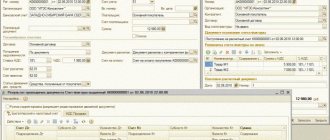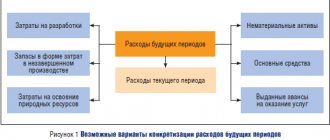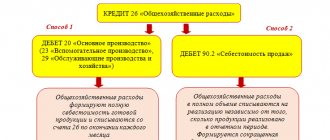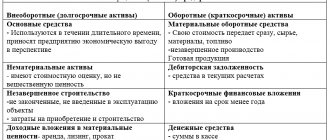The question of what accounting accounts are in general has already been discussed previously, and this article is still one of the most popular on our website. You can read it here. Now we will consider separately the questions of which accounts are synthetic and what are analytical accounting accounts.
Let us also immediately remember that nowadays almost no one does accounting manually, so we will show all the examples in the most popular accounting program for the enterprise, namely 1C: Accounting 8.3 (the article to which we provided a link above was written using examples for version 8.2, but the meaning there does not change).
The concept of synthetic and analytical accounts
In accounting, the economic life of enterprises and individual entrepreneurs is reflected in certain accounts regulated by the order of the Ministry of Finance of the Russian Federation “On approval of the Chart of Accounts for accounting of financial and economic activities of organizations and Instructions for its application” dated October 31, 2000 No. 94n.
Account entries reflecting the facts of business activities are made using the double entry method. In practice, this means simultaneous entry of an identical amount into the debit of one account and the credit of another. Basic accounting accounts are called synthetic. Synthetic accounts are accounts that contain generalized data on the business activities, property of the organization, as well as on the sources of property, collected according to certain characteristics. Synthetic accounting accounts have the ability to be divided into second-order subaccounts intended for detailing the account.
IMPORTANT! Accounting in synthetic accounts is displayed exclusively in monetary terms.
Analytical accounts are intended for greater detail and analytical assessment of the economic state of the organization. Accounting for this type of account is called analytical.
Analytical accounts are accounts of the third, fourth... order, which display in detail the cost and quantitative indicators of accounting.
IMPORTANT! The evaluation of operations in analytical accounting is carried out in monetary and quantitative terms.
Based on the definition of synthetic and analytical accounting, we can say that analytical accounting is an additional decoding in detail to synthetic accounting.
about what analytical indicators synthetic accounts should have according to the chart of accounts and instructions for its use here.
Synthetic accounting accounts
Users of reporting information often need information of varying degrees of generalization, i.e. both detailed and summary. To obtain indicators of different levels of development, synthetic and analytical accounts are used.
It will be most convenient to start getting acquainted with the accounting structure with synthetic accounts that combine grouped values for all operations of the company. Accounting on synthetic accounts is carried out in monetary terms and using double entry with corresponding accounts.
These include balance sheet accounts: 01 “OS”; 10 "; 51 “Current account”; 43 “Finished products”, 41 “Goods”; 70 “Payroll settlements with personnel”, 80 “UK” and others, forming report No. 1 - balance sheet.
The procedure for the formation of synthetic and analytical accounting
According to the Chart of Accounts, there are a number of accounts for which it is possible to open subaccounts. Subaccounting, by its purpose, is an additional link between analytical and synthetic accounting. The subaccount, in turn, combines several analytical accounts. Grouped analytical accounting is maintained within one synthetic account, including within sub-accounts.
In practice it looks like this.
Consider account 41 “Goods”. According to the Chart of Accounts, it is divided into the following sub-accounts:
- 41.01—goods in the organization’s warehouses;
- 41.02 - goods in retail trade;
- 41.03 - containers under the goods and empty;
- 41.04 - purchased products.
Subsequently, within each sub-account there is a breakdown of analytical accounts, for example:
- 41.04 “Purchased items” - accounting subaccount;
- Cotton fabric, chintz, flannel - analytical account.
Thus, the analytical account in this case will be the characteristics and designation of the type of property. Further, its characteristics can be deepened by other parameters, for example, by color or width of the canvas.
An example of analytical accounting for account 10 “Materials”, subaccount 10-3 “Fuel” from ConsultantPlus Vostok LLC has six cars: two of them are fueled with AI-92 gasoline, two with AI-95 gasoline and two with diesel fuel . Fuel accounting is kept on account 10 “Materials”, subaccount 10-3 “Fuel”. For intermediate grouping of data on fuel in vehicle tanks by type, second-order subaccounts are used: 10-3-1 “Gasoline” and 10-3-2 “Diesel fuel”. Analytical accounting of fuel is carried out in the balance sheet according to fuel grades and storage locations, which are considered to be vehicles. For August, the accountant filled out the balance sheet based on data from primary documents - waybills and advance reports of drivers with attached gas station receipts. You can view the entire example in K+ by getting free trial access.
Analytical accounting accounts
Analytical accounts are opened in addition to synthetic ones. We can say that analytics generates synthetic accounts, recording information on types of property, calculations and obligations, expressed in total and physical terms. Analytical accounts are used for a detailed description of accounting objects. For example, for account 62 “Settlements with buyers and customers” it is necessary to know not only the total amount of settlements, but also the specific amount of debt for each counterparty and the timing of its occurrence, and for the “Materials” account, competent analytics will indicate the availability, number of units and location of each type of goods and materials.
To detail synthetic accounting accounts, analytical accounts of different structures are used. Thus, to account for inventory items, analytics of a quantitative-total configuration are used, where the balance and dynamics of inventory items are recorded, respectively, in both cost and quantitative terms. Accounting for settlements with personnel regarding wages in terms of their accrual is carried out in labor and monetary terms, and for deductions from wages - exclusively in money.
In analytical accounting, double entry is not acceptable; simple entry is practiced. However, the information accumulated in analytics is more informative. Group analytical data within one synthetic account, opening subaccounts for it if necessary.
Mutual relationship between synthetic and analytical accounting
Facts indicating the relationship between analytical accounting and synthetic accounting:
- The basis for records in both types of accounting is the same document.
- Analytics is an additional detailed characteristic to synthetic accounting.
- The total amount of turnover for analytical accounts is equal to the total turnover for a synthetic account that combines detailed analytics.
For example, material accounting at a sewing enterprise can be organized as follows.
Synthetic accounting
| Check | Beginning balance (rub.) | Turnover (rub.) | Balance (rub.) | |
| Dt | Dt | CT | Dt | |
| 10.1 "Raw materials" | 18 490 | 7 500 | 17 670 | 8 320 |
Analytical accounting
| Check | Nomenclature | Unit change | From-beginning | Revolutions | S-to con | |||||
| Qty | Dt (rub.) | Qty | Dt (rub) | Qty | Kt (rub) | Qty | Dt (rub) | |||
| 10.1.1 Fabrics | Pog. m | 20 | 10 000 | 12 | 6 500 | 22 | 10 800 | 10 | 5 700 | |
| silk | linear m | 5 | 3 000 | 2 | 1 200 | 4 | 2 400 | 3 | 1 800 | |
| cotton | linear m. | 10 | 1 500 | 6 | 900 | 12 | 1 800 | 4 | 600 | |
| wool | linear m. | 5 | 5 500 | 4 | 4 400 | 6 | 6 600 | 3 | 3 300 | |
| 10.1.2 Fittings | PC. | 150 | 1140 | 170 | 900 | 250 | 1 620 | 70 | 420 | |
| buttons | PC. | 120 | 240 | 150 | 300 | 210 | 420 | 60 | 120 | |
| lightning | PC. | 30 | 900 | 20 | 600 | 40 | 1 200 | 10 | 300 | |
| 10.1.3 Sewing accessories | PC. | 14 | 7 350 | 2 | 100 | 10 | 5 250 | 6 | 2 200 | |
| scissors | PC. | 7 | 7 000 | 5 | 5 000 | 2 | 2 000 | |||
| Tape measure | PC. | 7 | 350 | 2 | 100 | 5 | 250 | 4 | 200 | |
Account 10 can correspond with different accounts, for example, accounts 20, 60, 76, 91, and even with account 94. Accounting account 94 is an account for accounting for shortages and losses.
Displaying synthetic and analytical accounting in the organization’s reporting
Maintaining accounting records by double-entrying accounts according to the approved working chart of accounts is the responsibility of the organization.
The turnover and results of synthetic accounting are reflected in the general ledger. The general ledger is the basis for the preparation of financial statements, including the balance sheet.
You can see an example of the General Ledger and other accounting registers in ConsultantPlus. Trial access to the system can be obtained for free.
Analytical accounting is reflected in a variety of accounting registers: cards on the movement of property, accumulative statements and other reporting documentation. Combining synthetic and analytical accounting in one accounting register is common.
Analytical accounting in 1C Enterprise Accounting 8.3.
Send this article to my email
In this article we will talk about what the types of subcontos are used for maintaining analytical accounting in 1C Enterprise Accounting 8.3.
In the 1C Enterprise Accounting configuration, subcontos are used to organize analytical accounting, which are specified as details (properties) of accounting accounts. Their use is necessary in cases where it is necessary not only to take into account the total amount of movements on the account, but also to obtain more detailed information. For example, know the balance of debt to your employees not as a total amount, but separately for each employee; have information about the balance of funds in each bank account; take into account not the total authorized capital, but obtain data on contributions by individual owners.
I will set up your 1C. Experience since 2004. Read more →
You can view which subaccounts are open to accounts in the chart of accounts.
I will give examples.
Let's take account 75, analytical accounting for it is carried out in the context of counterparties. In the special table of the card of this account, the subaccount Type is set to Counterparties, and the values for it will be selected from the Counterparties directory itself. So, when reflecting the operations of forming the authorized capital, the document must indicate the founders who made the contribution.
Let's take account 10; the subaccounts Nomenclature, Batches (receipt documents) and Warehouses are set for it. When preparing documents for this account, movements are displayed for these sub-accounts, taking into account the filling in of the document details.
Thus, the types of subconto are various directories, documents and or other objects of the information system, and the value itself is a specific object (for example, the type is a list of individuals, and the value is one of these persons - Irina Viktorovna Romanova). In the 1C system, subconto types are stored in a separate directory with predefined elements that can be supplemented. Which system objects will act as values for it is specified using the value type. Some subaccounts from the predefined list can be disabled.
You can make changes to the settings for maintaining analytical accounting in 1C that were specified during the initial installation of the database in the section Administration - Accounting settings - Setting up a chart of accounts.
In the examples on accounts 75 and 10, we see the division of subcontos into simple and compound.
Counterparties, nomenclature and warehouses are classified as simple, because For each type of value there is a unique one with the same name.
The batch is classified as a composite batch, because For them, several types of documents are used at once, with the help of which the movement of inventory items is recorded in the database.
In the database, this division is regulated by setting the Composite data type flag.
In standard 1C reports, generation with detail by subconto type is available. At the same time, there are reports that are generated on synthetic accounts, and the subconto is used as detailing (Account balance sheet, Account analysis, etc.), for them, in the settings on the Grouping tab, you specify which subconto groupings need to be reflected in the report.
And there are reports that are built specifically according to subconto, these include:
Subconto analysis. It allows you to obtain information on one or more sub-contos, as well as on certain values or even details of values;
Subconto card. It reflects all transactions in which the specified type of subconto was used;
Turnovers between subcontos. With its help, you can obtain the turnover between the list of selected sub-accounts and the list of corresponding sub-accounts, for example, counterparties and agreements on them.
EVERYONE MUST DO THEIR JOB! TRUST THE 1C SETUP TO A PROFESSIONAL. MORE →
Discuss the article on the 1C forum?
Monitoring the correctness of synthetic and analytical accounting
The main document for monitoring the correct display of accounting records is the balance sheet.
For more information on the procedure for generating turnover sheets, see the material “How to fill out a turnover sheet (form, sample)?” .
This accounting register is a grouping by accounting accounts, including subaccounts, indicating their names, total balances at the beginning of the period, turnover for the period (according to the assets and liabilities of the accounts), and the total amount as of a given date.
IMPORTANT! The turnover sheet can be compiled for any time period: both per day and per month, full and partial year. To form a balance sheet, data from the turnover sheet for the reporting period is taken.
The statement must meet the main principle of equality (the final balances of the debit and credit of the accounting account must be equal to each other).
IMPORTANT! The principle of equality is regulated and characterized by the structure of financial statements (balance sheet). The debit of the accounts is responsible for the property of the business entity; the credit of the accounts reflects the sources of formation of the property. Failure to comply with equality clearly indicates a violation and incorrect reflection of the facts of the organization’s activities in accounting.
For more details on the details of drawing up a balance sheet, see the article “Filling out Form 1 of the balance sheet (sample).”
Turnover sheets for analytical accounting can take different forms. These include a variety of statements - storekeepers' reports, commodity reports, and other accounting registers. The procedure and timing for the generation of statements are regulated by the established document flow of the organization and legislative norms. Most often, for the preparation of analytical reports, this is a calendar month.









